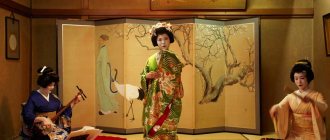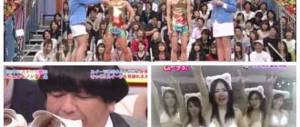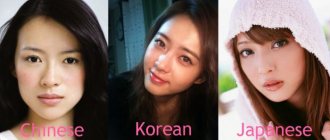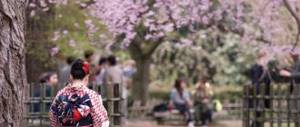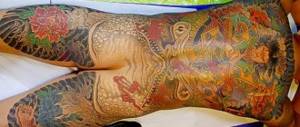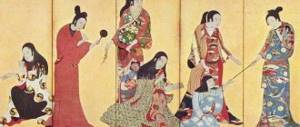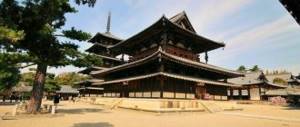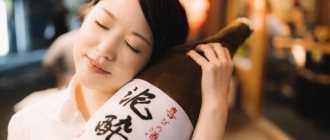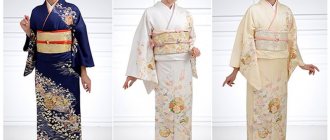The art of being a geisha. Mineko Iwasaki
In the Land of the Rising Sun - Japan - located on the islands in East Asia,
There are special areas known as karyukai.
These areas are intended for entertainment and aesthetic pleasure.
In fact, these are communities where professionally trained women live and work,
known throughout the world as geisha. (c) “Real Memoirs of a Geisha”
Mineko Iwasaki is the most popular geisha of the twentieth century and the highest paid geisha in Japan. This once modest girl became famous throughout the world after the publication of Arthur Golden’s book, and then the Hollywood film “Memoirs of a Geisha.” It was the stories of Mineko Iwasaki (as well as several other former geishas) that were used as the basis for the book and film, but turned upside down - real geishas never practiced prostitution and the sale of virginity. Golden violated the confidentiality rule under which Mineko shared her stories and the whole world saw her name in the acknowledgments section of A. Golden’s bestseller. Mineko Iwasaki sued Golden and received an undisclosed amount from him.
After all the events associated with the publication of the book, Iwasaki decides to write her own, thereby debunking the prejudices and fictions associated with her profession. In Russia, the book was published under the title “Real Memoirs of a Geisha” - it is Mineko’s autobiography, where she tells in detail who real geishas are and what they do, describing traditional Japanese culture and art, then her second book “Journey of a Geisha” was published:
“Even very educated people in most cases do not see the difference between karyukai (*"geisha quarter") and the brothel quarter and do not distinguish geishas from prostitutes, mistakenly considering karyukai the birthplace of sexual pleasures" (from the book "Journey of a Geisha.")
Literally translated from Japanese, “geisha” means “person of art.” The very concept of “geisha” is not used by the girls; they call themselves “maiko” (“woman of the dance”, a young girl) and “geiko” (a former maiko girl who has undergone the rite of passage to an adult geisha). Both live in an okiya (“geisha house”), but maiko are students who are bound to the house by contract (for 5-7 years). It is the okiya that pays for the maiko’s training, all their expensive outfits, and brings them out into the world, organizing meetings in tea houses where the maiko dance and communicate with clients. Because This all happens at the expense of the house and this is a huge contribution to the girl and her future, then Maiko gives the money she earns to the house, thereby returning her “debt”.
Maiko is a student, she goes through several stages of training, at each of which she changes her hairstyle. It is by this that one can determine at what stage the girl is now. Due to the frequent change of hairstyles using pins and “tight” hair, many girls by the age of 20-25 have characteristic baldness. The last time a maiko changes her hair is before erikae (“change of geisha collar”), the ceremony of transition of a maiko to a geiko. No, neither this nor any other ceremony among real geishas is associated with the sale of virginity and has nothing to do with prostitution. At the ceremony, the girl is introduced to clients and she dances her first geisha dance and can now independently conduct events for clients. Until this moment, at all o-zashiki (“receptions in tea houses”), a maiko cannot attend alone, only accompanied by onesan - the “elder sister” (geisha mentor chosen for her):
“Senior geiko are mentors and models for younger ones. They display their artistic talent and act as mediators to resolve any conflicts that may arise between students and teachers. Helping their little sisters prepare for their debut. In addition, they help them cope with their professional responsibilities. Onesan teaches younger girls the intricacies of banquet ceremonies and etiquette, introduces them to important clients and other people who can help or be useful throughout their careers.” (from the book "True Memoirs of a Geisha")
Sacco hairstyle before erikae:
Adult geiko can work independently, and after finishing their career at their own discretion, they can get married or open their own business.
The exception is atotori (i.e., the heiress of the geisha house) - the legal heirs of the okiya, they are treated in a special way in the house, all residents of the house, including adult geisha, must treat the little girl with respect, they prepare special food for her, and they are forbidden to ride on skates, skis and a bicycle so that she does not get hurt, but at the same time, atotori have a very important duty that they perform every day - they clean all the toilets in the house:
“It seems to me that there is a certain meaning behind the fact that cleaning toilets is the responsibility of the atotori. Even those people who occupy the highest position must do something for everyone" (from the book "Journey of a Geisha").
Mineko Iwasaki was precisely an atotori. At birth her name was Masako Tanaka-Minamoto. The owner of the okiya once saw her at the age of 3 and said that the girl had a great future and should become an atatori of the okiya of Iwasaki. She was supposed to take the surname of her okiya and become the “boss” of the house after the death of the former mistress. Therefore, she had to abandon her parents and become the adopted daughter of the owner of the okiya:
“I was the last child in the family, my parents always spoiled me, life with them in the Yamashina district of Kyoto was filled with warmth, but I was attracted to other things that I could only get in the Iwasaki okiya. One of them is to dance the mai dances. According to tradition, I started dancing on June 6th, when I turned six years old according to the old Japanese system.” (from the book "Journey of a Geisha").
From childhood, girls learn to dance, sing and play traditional Japanese instruments. Traditional Japanese dances "Mai" have religious origins and literally mean "rotation", the dances are very slow and based on the smooth movement of the hands, often using fans and masks in the dances.
“Traditional Japanese dances are very different from Western ones. They are more often danced in white tabi socks than in special shoes. The movements, unlike ballet, are very slow and directed more towards the earth than towards the heavens. However, as in ballet, all movements require enormous muscle tension. They are taught as a set of fixed postures (kata) that are combined together to form an independent passage.” (from the book “True Memoirs of a Geisha”).
Dance classes take place every day, for many years, until the geiko retires. A talented girl’s training regimen may be the same as that of a prima ballerina.
Another important part of geiko training is singing and playing traditional Japanese instruments:
“Koto and shamisen are stringed instruments that were brought to Japan from China. The koto is a large thirteen-string floor instrument, the shamisen is a smaller, three-string instrument, played almost in the same way as the viola. We dance most of our dances to the accompaniment of these two instruments.” (from the book "True Memoirs of a Geisha").
Also, to broaden their horizons, the girls took calligraphy lessons and, of course, learned the art of conducting the tea ceremony.
All these skills are necessary for maiko and geiko to conduct o-zashiki - banquets in tea houses, meeting with clients. The ability to carry on a conversation and find a common language with clients is almost the main and very important quality that a girl should have. Geiko is essentially a combination of an artist and a psychologist in one person, but in no case a prostitute. Clients came to tea houses to take a break from work and relax:
“Our role is to listen to all customers. The clients who come to Gion Kobu are people who run companies and occupy positions of responsibility. Among them there are many people who feel lonely. Both at work and in the family they have a lot of troubles that they cannot share with anyone. I considered myself a trash can, into which, instead of things, clients throw away what has accumulated in their souls. Here the guest can become himself, cry, laugh, turn himself inside out” (from the book “Journey of a Geisha”).
Before each appointment, the girls studied their client - what he does, what his interests are, what problems he has at work. All this was necessary to maintain the conversation; due to their profession, all geiko were diversified, actively interested in various branches of science and business, and kept abreast of all the latest news. Business partners often came to tea house receptions to discuss important issues outside the office; they were not afraid to talk in front of girls, because there was a rule about non-disclosure of information heard in front of clients.
It was quite difficult to get to the receptions themselves; the “man on the street” just couldn’t do it. Firstly, geishas and owners of tea houses valued their honor and name very much; they sought to host only well-tested people. Most often these were businessmen, scientists, diplomats, etc. Casual people were not allowed to attend such events; in order to visit o-zasiki, a person needed a recommendation from a regular visitor. Secondly, the cost of visiting o-zashiki. Not everyone could afford to spend time surrounded by geishas. Attending such banquets was very prestigious, so good company managers often brought their promising young employees to o-zashiki, and fathers brought their children. A visit to o-zasiki raised the prestige of young people.
The profession of a geisha is very expensive. Money is needed for the girl’s education, for a kimono, for making jewelry, etc. While the girl is studying, the okiya takes on all the expenses, but after she becomes a geiko, the costs fall on her, so girls often have a danna - a patron. Typically a geisha has 1-2 patrons in her life. Danna is first and foremost a philanthropist who invests money in geiko. These are people who appreciate and love traditional Japanese art. Sometimes danna and geiko have intimate relationships, which often end in marriage and the birth of children. But sexual overtones are not the main thing, much less obligatory; intimate relationships begin in the same way as with other ordinary people, out of love. A geisha is unapproachable; she does not sell her love for money. Geisha are prohibited from providing sexual services for money and not a single geisha will do this; she values her name and career.
After finishing their careers, geisha can get married, stay working in karyukai, or open their own business. Often girls work in the restaurant business or teach young girls everything they once learned themselves. But there are also certain problems. Geisha are the guardians of traditional Japanese art; they have enormous knowledge in this area, but, for example, cannot share it with ordinary people. And the point here is not at all in secrecy and “greed”, but in the fact that they do not have diplomas. Spending their entire lives studying, girls only have a high school diploma. So, for example, at one time Mineko Iwasaki and her husband were invited to give lectures, but they refused to sponsor her work due to the lack of a “crust”. Having only a secondary education diploma in hand, girls often find it difficult to get a job outside of karyukai. In addition, geisha often suffer due to the archaic nature of the system in which they work.
After the release of the film “Memoirs of a Geisha,” a huge stream of tourists poured into Japan, trying to capture geishas in real life, and the boorish, obscene behavior of tourists, which again arose thanks to the film, made the girls’ lives impossible. The government was forced to send police patrols to the villages in order to somehow protect the girls.
As for Mineko Iwasaki, after finishing her career (at the age of 29), she married the famous Japanese artist Jinichiro Sato, he taught her how to restore paintings. Mineko Iwasaki later published 2 books and became a true best-selling author and the most famous geisha in the whole world.
Thank you for your attention,
Anna Lazareva.
PS All photos are taken from the Internet. Mineko Iwasaki is shown in the 1st and 2nd photos.
What was taught
Having studied for many years, at the age of 15 the girls became only students, and at 21 they became real geishas who can work independently. Mineko Iwasaki has always been attracted to dancing. But they taught girls many other subjects as well. To become successful, they had to be able to sing, play traditional musical instruments, know the rules of etiquette, the tea ceremony, speak several languages, take care of their appearance, dress properly and conduct a conversation. One of the subjects was calligraphy. In order to communicate with clients, and these were always people from the upper strata of society, the girls had to keep abreast of events in the world, scientific discoveries, and business news. This was necessary in order to competently maintain a conversation. The girls were bound to the geisha house by a 5-7 year contract, and although they worked independently, they gave money for their services to its owner. After all, a lot of money was spent on their training. Take, for example, expensive suits. And thus the students repaid their debt for free education.
It's all a lie
The reason for filing the lawsuit was not only the disclosure of confidential information, but also the fact that the writer in his book seemed to draw a parallel with the life of Iwasaki herself, while distorting the facts. Of course, he strived for popularity and enrichment. The work turned out to be so interesting that a famous film of the same name was made based on it, which also added to the writer’s fame and wealth. But Iwasaki's feelings were hurt. The reader gets the impression that geishas and girls of easy virtue are one and the same. In addition, Iwasaki is outraged by the scene of the sale of virginity at auction. She claims that this never happened in reality. Although he does not deny that intimate relationships arose between geishas and clients, it was all for love and geishas have nothing to do with sex for money.
Look can't touch3
You can’t look, you can’t touch... The comma, thanks to the perverted understanding of the nature of geishas, today is placed in the wrong place. After the geisha craft was recognized as a profession in 1770, very strict rules of behavior were introduced for them. First of all, they concerned a complete ban on offering intimate services to clients. Geishas sold their society and skills, but not their bodies.
In those days, geishas were a kind of psychologists and motivational trainers who could quickly make any man believe in himself, perform feats and achieve his goals. It should be noted that you had to be a very wealthy person to afford to spend time with a geisha.
For love pleasures, one could turn to less respected women and save a lot of money. Geisha, on the other hand, were rich and influential women; it was not fitting for them to slide down to the level of ordinary courtesans. Visits to geishas were a way to show wealth and refined taste. In fact, a visit to a geisha is practically an honor for the entire family, even today when times have changed significantly.
It’s not for nothing that the Japanese proverb says: “a wife is for the home, a prostitute is for sex, a geisha is for the soul.”
End of the road
Perhaps this was the impetus for Iwasaki’s decision to end her career as a geisha, although she was very popular and highly paid. She earned $500,000 a year for 6 years, something no other geisha could achieve. Iwasaki explained the reason for her departure by saying that she wanted to start a family and stop playing the role of a geisha. However, her departure caused a public outcry. As Mineko admitted later, she wanted society to pay attention to the imperfections in the geisha education system, but achieved the opposite effect. More than 70 girls of the same occupation as her also interrupted their activities. Iwasaki believes she has some part in the fact that her profession is so rare these days. There are only a few real geishas, and their services are so expensive that only very rich people can pay for them.
Japanese punctuality
Perhaps it is worth noting one more important point that makes a geisha even more attractive. The fact is that a Japanese woman in a traditional dress only looks like a porcelain doll. This is deceptive decorativeness. The difficult natural conditions on the islands and the constant struggle for survival and for a place in the sun made Japanese women very strong, resilient and practical. If these are magnolias, then they are truly “steel”.
A quote from Valentin Pikul’s novel “The Three Ages of Okini-san” would be appropriate here:
“Now, during the entire stay in Nagasaki, I am calm for you: there has never been a case where a young officer who married a Japanese woman was late for his watch!” This is what one Russian sailor said to another when he, while serving in Japan, took himself a “musume” - a temporary wife from local women. And indeed, temporary Japanese wives took care of their Russian husbands as if they were spouses for life. And they always made sure that their “husband” did not have unnecessary worries - they themselves kept track of the time and hired a boat so that the sailor was delivered to the ship without delay.
A woman can be very beautiful, but this is not a guarantee that she can be just a decoration all her life. Japanese geishas understood this very well, and therefore successful clients often took them as wives. The most valuable quality of a Japanese woman is that you can rely on her.
Who betrayed her?
However, the writer Arthur Golden needed memories of his previous occupation. She agreed to give him an interview on confidentiality terms. But for some reason, the author of the book “Memoirs of a Geisha” violated it and indicated Iwasaki’s surname in the list of acknowledgments, which he published in his work. Because of this, Mineko found herself in an unpleasant situation. After all, geisha are obliged to keep secret how they are trained and not to give away the secrets of their work in the future. Iwasaki was even threatened with physical harm for violating this law. All this forced her to file a lawsuit, which she won and even received monetary compensation.
True story
In order to cleanse the profession of dirt, Iwasaki wrote two books in which she talks in detail about how geisha actually train and work. The book, co-authored by Mineko Iwasaki and Rand Brown, “True Memoirs of a Geisha” is an autobiography. In it, Mineko talks about her whole life. She also published another of her literary works. Mineko Iwasaki's book "Journey of a Geisha" is a collection of notes about her life in the geisha quarter, funny and instructive incidents from her practice. It is no coincidence that Rand Brown co-authored her books. She is the president of a company created to improve understanding between America and Japan. In addition, she is a famous translator from Japanese.
Life spoiled this woman. She lived in love in her parents' house, was in a special position in the house of geishas, and became a happy wife and mother. Perhaps her purpose was to tell the whole world the truth about sophisticated and beautiful women, whose profession was shrouded in mystery for so many years.
Pay for popularity
“True Memoirs of a Geisha” is a book in which Iwasaki unashamedly reveals the whole truth about his life in the geisha house. Therefore, she does not hide the fact that during her career, girls had to sacrifice their beauty. For example, daily tight hairstyles using styling products led to hair damage and sometimes baldness. In addition, Iwasaki had to listen to clients and act as a kind of psychologist to them. And what they said, trying to ease her soul, was often so unpleasant that she compared herself to a garbage can into which sewage had been poured. Among other things, popularity brought not only pleasant results. Numerous fans aroused the envy of the women around her. She sometimes experienced physical violence, for example when men tried to force her into intimate relationships against her will.
